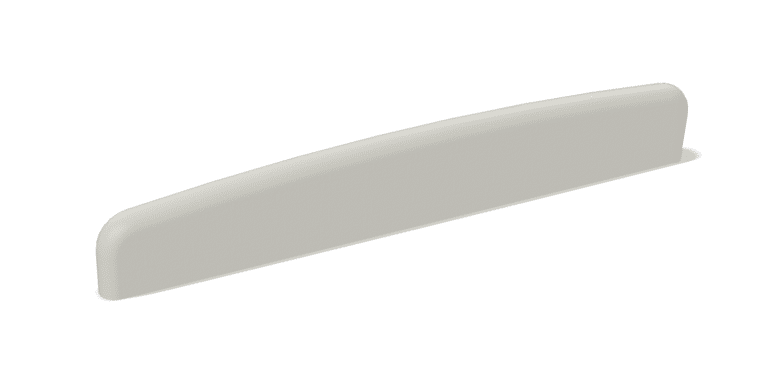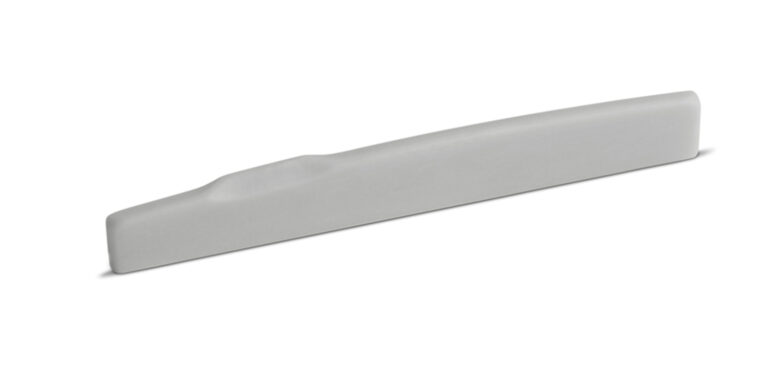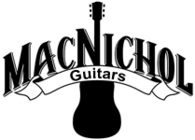Find the Correct Saddle for Your Gibson® Acoustic Guitar
Need a Gibson acoustic guitar saddle? Gibson began making guitars well over a century ago, and so finding the right saddle for your Gibson can be difficult as there’s no single saddle size.
This article will provide some tips on finding the right saddle for your Gibson flat top steel string acoustic guitar, but we advise that you measure your guitar’s saddle slot for a proper fit. If you are not the guitar’s original owner, at some point someone may have installed a different saddle or have adjusted the saddle slot, resulting in different specs from the factory’s.
Please Note: Epiphone guitars use different saddle sizes from those used on Gibson models, even models with the same names. Please see our article on Epiphone guitar saddles.
Step One: Determine Fretboard and Saddle Radius
Gibson acoustic guitars often come from the factory with a saddle radius that differs from the fretboard’s. For example, the Gibson style Tusq forward line B compensated saddle has a 10 inch radius, noted by the R-10 below the Length, Thickness, Height specs on the Tusq page.
Gibson acoustic guitars often have a 12 inch fretboard radius, but please note that some Gibsons have a 16 inch radius fretboard. If you have recent model, you can check fretboard radius specs on the Gibson website. If you have an older model, find your guitar’s serial number and contact Gibson and ask what the fretboard radius is for your year/model.
Please note that if you are not the original owner, another neck may have been installed at some point. You may want to check the fretboard radius with a gauge.
In our experience, customers prefer the playability of a saddle and fretboard with match radii, and so our Gibson style saddles are typically made with either a 12 or 16 inch radius. However, if you would like a different radius, please contact us.
Step Two: Determine Saddle Type
Gibson acoustics often have one of the below saddle types, but please note that other saddle types may have appeared during Gibson’s long history.
Through Saddle
If your Gibson flat top steel string guitar was built prior to the 1950s, then chances are it has a through saddle, which goes all the way through the bridge and may be glued in. Through saddles are also used on several of Gibson’s current Custom Shop Historic Collection models. These saddles are often non-compensated with a 12 inch radius, but height, length, and thickness vary.
This type of saddle requires much more skill and knowledge to do the replacement and we advise that you hire a professional guitar technician do the work.
Non-Compensated Drop In Saddle
From some time in the 1950s to the present, Gibson has often used center line non-compensated drop in saddles with a 12 inch radius, although since 2000, Gibson has more often used a B compensated saddle – more on this later. Length/height/thickness will vary, so please measure your current saddle and bridge saddle slot.
Gibson twelve string guitars often use a non-compensated saddle. These saddles are often similar to other Gibson saddles as far as height, thickness, radius, but will often be about 4 mm longer than six string saddles are.
Please note that a drop in saddle means that the saddle is not glued in, but still may require adjustment to a specific guitar’s saddle slot. Similar to through saddles, these drop in saddles also typically had a 12 inch radius, but length and thickness varies.
For post-2000 Gibson models with a 12 inch fretboard radius that use a non-compensated saddle, you will need to measure your current saddle first as these will vary between 70 and 71.5 mm in length, and between 3.1 and 3.3 mm thickness. Maximum height will vary significantly from guitar to guitar, although often from 8 mm to 11 mm. You must remove your current saddle and measure before your order a replacement. Once you have the measurements please see our 70 mm non-compensated saddle and our 71.5 mm non-compensated saddle.

Gibson C Series Saddles
Gibson C Series nylon string guitars will have either a through or drop in saddle, and are typically non-compensated. However, these saddles do not have the 12 inch radius that Gibson steel string saddles have, and instead often have a flat top where the strings rest on the saddle. Length and height will vary.
Height Adjustable Saddles
The height adjustable saddles appeared on a number of Gibson models from the late 1950s to the 1970s. This saddle type was either made of ceramic or rosewood, and the bridge contained metal hardware that allowed one to adjust the saddle height. Although a great idea for playability adjustments, the saddles are often regarded as tone killers, with some guitarists opting to replace the entire bridge.

This type of bridge/saddle is currently used on the 60s J-45 model, and has been used on some of the Reissue models, such as the J-160E.
Note: A height adjustable saddle is different from a floating bridge, which is found on an archtop guitar. Please see the following links for more information on floating bridges.
StewMac Archtop Bridges and Tailpieces
Gibson Tune-o-Matic Bridge
Although somewhat rare, you will see some Gibson acoustic models with Tune-o-Matic bridges, which allow for intonation adjustments just as on an electric guitar. Please see the following video for more information: 1960s Gibson J-200 with Tune-o-Matic
Gibson Mark Models
From 1975 to 1979, Gibson produced the modern-looking Mark line with five different models. Only 8,311 of the Gibson Mark models were made. They had a distinct bridge and saddle. Finding a replacement saddle will be difficult, and you may need to have one custom made.
Forward Line B Compensated Saddles
Around the year 2000, forward line B compensated saddles started appearing on Gibson models – please see our Guide to B Compensated Saddles for more information. These saddles typically range from 70 to 71.5 mm long, 3.0 to 3.3 mm thick, and are often fairly tall, often around 11 mm, but can be anywhere from 8 to 13 mm in height. You will need to remove your current saddle and measure length, height, thickness before ordering a replacement.
Gibson models often have a 12 inch fretboard radius, but note that Gibson will also use a 16 inch fretboard radius on some models. We advise that you contact Gibson with your serial number or measure your fretboard radius before ordering a saddle. Gibson models that use a 16 inch fretboard radius include the Jerry Cantrell “Fire Devil,” Jerry Cantrell “Atone,” J-45 Studio Walnut, J-45 Studio Rosewood, Hummingbird Studio Walnut, Hummingbird Studio Rosewood, L-OO Studio Rosewood, SJ-200 Studio Walnut, SJ-200 Studio Rosewood, Slash J45, Dave Mustaine Songwriter, G-OO, G-45, G-Writer, G-200, G-Bird. Please see our Gibson-style B Compensated Saddle with 16 Inch Radius for many of these models.

Please note that Gibson guitars made since 2000 with non-compensated saddles often have slightly smaller saddle slots than the B compensated saddle slots do. As such, a Gibson style B compensated saddle may not fit a saddle slot meant for a non-compensated saddle, and vice versa.
Additionally, the B compensated saddle is not just a center line non-compensated saddle with B compensation; indeed, every string will sit in a different position. Please view the below two images of a center line non-compensated saddle (top) and the Gibson style B compensated saddle (bottom) from the top, both with a three degree bridge slot saddle angle. The thin blue line shows approximately where each string sits on the saddle top, but this will vary depending on bridge string spacing.


With the center line non-compensated saddle, all the strings sit in the center of the saddle top. Additionally, the three degree saddle angle also is a form of compensation by making each string from the treble side to the bass side progressively longer.
With the Gibson style B compensated saddle, the B string sits back toward the bridge pins, whereas all other strings rest forward toward the soundhole.
As such, replacing a center line non-compensated saddle will affect intonation on all strings. If you have a center line non-compensated saddle, but with a sharp B string, a B compensated saddle might correct that string’s intonation problem, yet cause intonation problems with some or all of the other strings.
Which Saddle Size Does Your Gibson Need?
If you need more information on which saddle your Gibson acoustic guitar needs, please contact us with all of the below information:
- Your Gibson’s Year, Model, Series, Fretboard Radius
- Current Saddle Length, Height, Thickness – Measured with a Caliper
- Guitar Saddle Slot Length, Thickness (if different from your saddle specs)
- Bass/Treble Edge Height Difference
- Current Saddle Compensation Pattern (please send a picture if you are not sure what type you have)
- String Spacing at the Bridge
We will respond within 48 hours.
